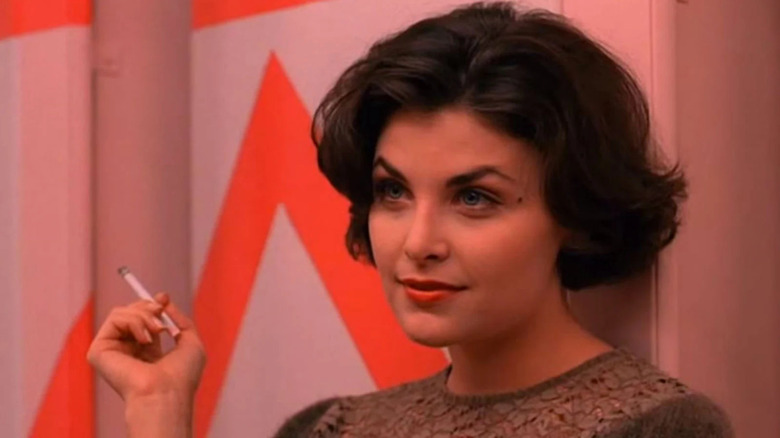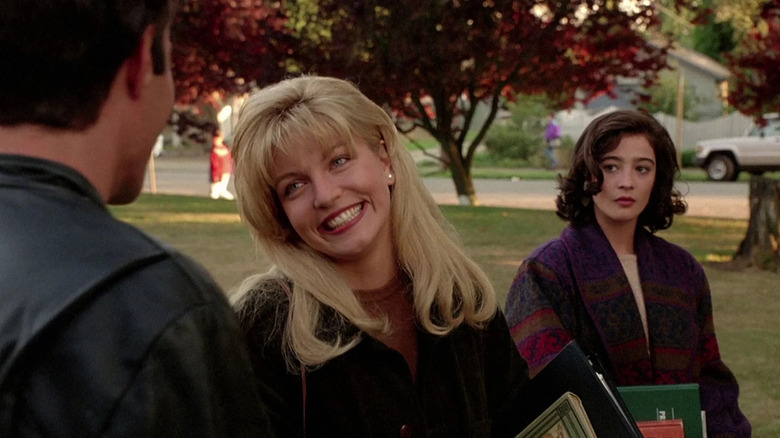How The Creators Of Twin Peaks Tricked Their Way Onto TV
This post contains spoilers for the first two seasons of "Twin Peaks," and "Twin Peaks: Fire Walk With Me."
Although the original run of "Twin Peaks" only went on for about two seasons, it still made its mark as one of the most remarkable shows of the '90s. In a TV landscape where nearly everything was episodic, "Twin Peaks" was deeply serialized. Not only did it take around 14 episodes for the case that started the series to be solved, but from the first scene onward, the show was in a constant mission to expand its scope. In addition to Cooper working with the police to figure out who killed Laura Palmer, the show also had constant, ongoing storylines surrounding Donna, James, Leland, Bobby, Shelley, Nadine, Hank, Norma, Audrey, Catherine, and so on. Everyone on the town seem to have secrets the show would explore, many of which had little to do with Laura.
It was also a show surprisingly interested in exploring the grief surrounding its core character's death. Whereas most episodic detective shows don't particularly focus on the feelings of the deceased's loved ones — they'll often introduce a new dead person per episode, treating said person mostly as a puzzle to be solved — "Twin Peaks" was aggressively aware from the start that having a loved one violently murdered is devastating, and that it could really shake up a community.
The pilot episode in particular spends a lot of time wallowing in the emotions of Laura's friends and family. "In that pilot," co-creator Mark Frost said, "the intense feeling of grief that dominates the first half hour is pretty immersive. It pulls you into a world where all these people are reeling and in pain and confusion, and people just seem to want to go there."
'In the end, very real and tragic'
What would've made it the hardest to pitch was the actual explanation for what happened to Laura Palmer. The reveal that her father Leland was her killer in season 2 was not a fun "aha!" moment, but the beginning of one of the darkest scenes ever played on ABC, one that served as a dark rebuke of the stranger danger panic that really picked up steam in the '80s. As much as people were expected to fear their kids could potentially be attacked by any stranger on the street, ultimately the biggest threat to a kids' safety was their own family.
At its core, "Twin Peaks" is a story about a teenage girl who was repeatedly raped and then murdered by her own father, a man who was seen as an upstanding member of his community. It's an incredibly dark premise for a show airing on ABC in the early '90s, which is perhaps why season 2 of "Twin Peaks" pulled back a little in Leland's final episode, making it seem like Leland was an innocent person who was possessed by an evil spirit. It was with the prequel movie "Fire Walk With Me" that David Lynch, now free from the constraints of network TV, centered the story around Laura's last days alive. The prequel makes it far more ambiguous just how in control Leland really is, as well as makes it clear just how badly Laura was abused throughout her whole childhood.
But as for the process of getting season 1 produced in the first place? These aspects of the story were underplayed. "We didn't tell [ABC] what it was originally," Mark Frost said, "because they probably would have killed it right away if they'd known what was actually going on."

